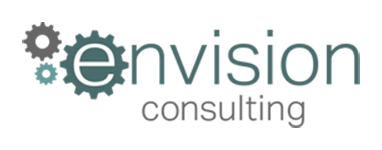We haven’t talked about it much here, but an election happened in 2016. In the nonprofit industry, especially in California, we were…. surprised, dismayed, energized, and angry. And since then, the nonprofit industry has been working frantically to try and change the tide. We’ve worked harder on advocacy, we’ve talked more about equity, and we are trying really hard to be more inclusive. And our funders are leading the way, changing funding guidelines to focus on core issues around diversity, inclusion, equity and social justice. But, that’s going to be a challenge for a lot of organizations; because when it comes to equity, diversity and inclusion, nonprofits just don’t walk the walk.
Sure we talk a good game about equity and inclusion for our clients. We talk about advocacy at the local and federal levels. We fight for minimum wage increases and promote literacy programs. Except when it comes to our own practices. But if we want to really spark change, the first place to start from is within, and here’s where we think you can start.
1. Being a nonprofit doesn’t give you a pass on extremely low wages
At this point in the blog, someone just yelled at the screen. We feel it. We get it. Nonprofits already have razor thin margins and are threatened with looming federal cuts every single day. But. When your front-line employees are income-eligible to receive your services and you’re offering huge benefits packages for senior staff, something is very wrong. In no way are we arguing that your senior leadership does not deserve great pay, but so do the people who are tasked with delivering your mission every single day. If you are a nonprofit worried about how you’re going to deal with the impending minimum wage hike, it’s time to include meaningful pay increases in your strategic plan.
2. Inclusion means including all populations
Faces on your Board, senior leadership teams, and constituents should be reflective of one another, but all too often that’s not the case. You come to us and ask why that is, but the answer is fairly obvious. Usually discussions about diversity and inclusion happen in only very small circles that ONLY includes Board Members, or ONLY Senior Leadership or ONLY the happy constituents. That’s not how this works. Inclusion means including opinions and backgrounds that differ from your own, and even working to engage and promote these views and individuals. Your organization is supporting the community, and that means hard work to engage and include isn’t limited to program work.
3. Financial literacy needs to be an organizational priority
Too often we hear from executive leadership that other staff “don’t need to” understand the budgets of the organizations they work for. Clearly, there’s a bit of a disconnect between them and the IRS requirement that keeps our financials public domain. To some nonprofits, it doesn’t seem like a big deal, but from our perspective financial literacy is the differentiator between every single level of management. Nonprofits scramble to ensure that donors understand our financials, but wave off staff inquiry. Not only is that detrimental to the organization, it’s inherently unfair and inequitable
4. Importing diversity doesn’t fix the underlying issue
We can bring together panels of diverse faces and your organization can hire them, but one diverse face on that leadership page isn’t fooling your funders or your community. In fact, it kind of begs the question: why don’t their staff development practices promote diversity and equity? And why not? Because too often organizations don’t invest in robust management development programs and those that are out there don’t give people the kinds of skills they need to apply for executive level jobs.
5. Investing in developing staff should always be mission-critical
Take a look at the training line-items in most nonprofits and you might think we’re dead wrong about this one, but the reality is that training line items are usually either dedicated to Board and executive training, or mandated by clinical or legal needs. It’s incredibly rare that individuals who are promoted into supervisory and managerial positions get the actual formal training and guidance they need to be successful. Not only does this unfairly set up these individuals for failure, it can lead to turnover, morale issues and serious organizational risk.
BONUS
6. Arbitrary formal education requirements are not equitable
We know we’re not alone here, so we’re going to leave most of the argument to our friend Vu at Nonprofit AF in this article. But the reality is that aside from clinical roles, very few positions exist where formal education can be substituted for actual experience. Requiring degrees has become an unnecessary default in most organizations and it is unfair to applicants for whom formal education is not attainable. And it gives an unfair edge to applicants who may actually meet fewer qualifications.
WANT TO BUILD MANAGEMENT PROGRAMS: WE DO THAT
LOOKING FOR A MORE EQUITABLE ORGANIZATION: WE’RE HIRING
NEED TO GET YOUR BOARD ON BOARD: WE DO RETREATS

